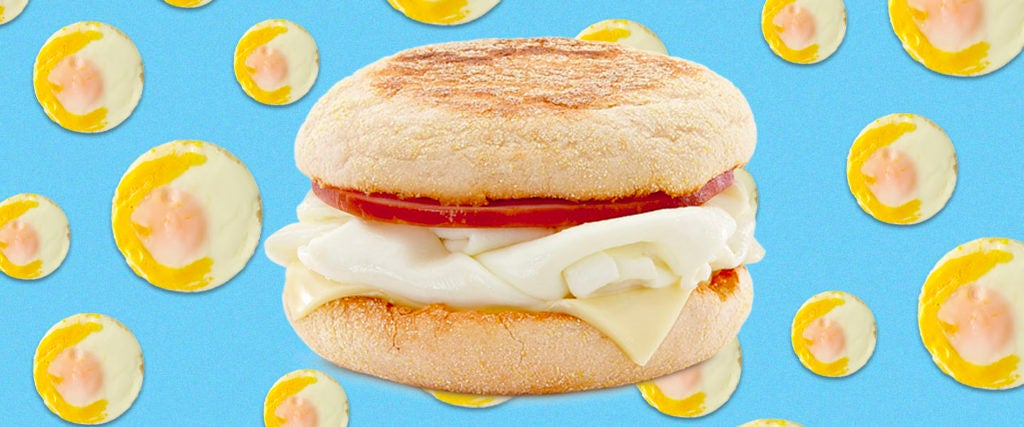The egg white used to be considered the garbage part of the egg. In fact, most media coverage allocated to egg whites tended to be found in the homemaking section of the newspaper, and it usually dealt with how to not let them go to waste. For example, a 1978 L.A. Times article had a special segment entitled “Using Up Leftover Egg Whites.” Presumably, the matchless value of the egg yolk had already been realized through some other dish, and the valueless egg whites were now being salvaged as they were added to concoctions like Victorian Fruit Whip and Lady Baltimore cake.
So leftover egg whites used to get tossed in the trash?
Yes, they did. By 2010, though, things were much different. The same culinary newspages were advising readers to reduce the amount of egg yolks used in their cooking in order to reduce their overall consumption of fat, while still utilizing every last ounce of the egg whites. A 2009 article in The Modesto Bee extolled the nutrient value of eggs — especially the vitamin content — and then urged eaters to cut out the egg yolk, curiously failing to reconcile their advice with the fact that nearly all of an egg’s beneficial vitamin content, let alone its flavor, is located squarely inside of its yolk.
In the eyes of many people, chopping out 70 percent of an egg’s caloric value and 95 percent of its micronutrient content was worth it in order to retain 66 percent of its protein while eliminating 100 percent of its dietary fat. The net caloric deficit from all of this, in daily terms, would be about 150 total calories if you scarfed down a three-egg omelette every morning and didn’t compensate for the notable dearth of flavor by over-sprinkling shredded Mexican cheese on top of that omelette.
That’s such a massive shift in public perception! So when did McDonald’s get in on the action?
McDonald’s added the Egg White Delight to its menu in 2013, with Olympic gold-medal-winning gymnast Gabby Douglas as their spokesperson. In interviews, public appearances and commercials, Douglas both figuratively and literally flipped over what she intimated was McDonald’s “wholesome” new addition to the McMuffin family.
There’s just one issue: McDonald’s didn’t change any of the other Egg McMuffin ingredients. This means that even in its Egg White Delight form, the McMuffin remains a glorified eggs Benedict, minus the hollandaise sauce. The only difference is, the Egg White Delight has about 50 fewer calories and none of the nutrient value provided by the egg yolk of the standard-issue Egg McMuffin.
If this was honestly all about lowering the percentage of the food item that was composed of dietary fat — and I’m not suggesting that it should have been — you’d have thought the food scientists over at McDonald’s would have also taken a serious look at the butter, cheese and Canadian bacon in the McMuffin as well, but none of that appears to have happened.
When you add it all up, this appears to have been an effort by McDonald’s to stay on trend with the egg-white craze of the period, and attempting to keep pace with what customers were requesting of them. Whether those customers had all of the correct information prior to making those requests is a different story.
Are you saying McDonald’s allowed the pressure of public opinion to sway their menu-making decisions?
Don’t sound so shocked. Hopping aboard culinary bandwagons is what McDonald’s does best, and I say that with full admiration and sincerity.
McDonald’s will shamelessly allow all of the second-tier fast-food giants to optimize their research for them, and then fearlessly swoop in and offer that brand’s most valuable products with “Mc” in front of the name. Dairy Queen’s three most popular Blizzard flavors are M&M’s, Reese’s Peanut Butter Cups and Oreos? Cool. Here’s our McFlurry, available almost exclusively in those three flavors. Starbucks is catching on? Sweet. Here’s McCafé. Plain glazed munchkins are the top seller at Dunkin Donuts? Awesome. Here’s our glazed pull-apart donut. They’re totally not donut holes.
All of which is to say, if you’ve weighed all of the ramifications of phasing either entire foods or components of those foods out of your nutrition plan, then by all means, go for the Egg White Delight. Just make sure you’ve considered what you’re gaining and losing in each of those exchanges before a world-class gymnast who burns 1,000 calories per training session tries to convince you that she gets vexed about ingesting an extra 50 from an egg yolk.

